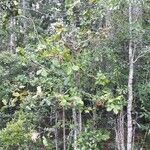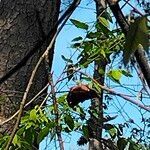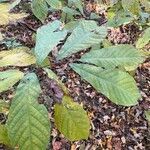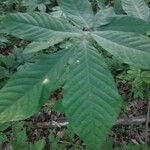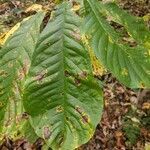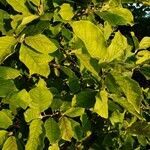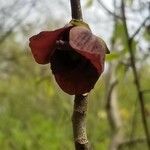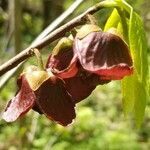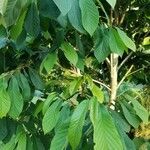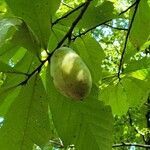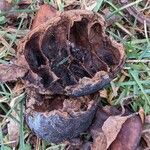Usually shrubby, sometimes a tree to 10 m; young twigs hairy; lvs oblong-obovate, becoming 15–35 cm after anthesis, abruptly short-acuminate, gradually narrowed below; petiole 5–10 mm; fls from wood of the previous year, lurid purple, 3–4 cm wide, the sep 8–12 mm long, the outer pet 1.5–2.5 cm, broadly ovate, outcurved, the inner ovate, nearly erect, and nectariferous at the base; receptacle hemispheric or subglobose; peduncles hairy, (10–)15–20(–25) mm at anthesis; frs solitary or few, 6–15 × 3–4 cm, yellowish-brown, rounded at the tip; seeds flattened, 2–2.5 cm; 2n=18. Rich, damp woods; w. N.Y. and s. Ont. to s. Mich. and e. Nebr., s. to Fla. and Tex. Apr, May.
A medium sized tree. It grows to 8-15 m tall. It has straight spreading branches. It loses its leaves during the year. The leaves are narrow and oval. They are up to 25 cm long. They are widest above the middle. The upper surface is green and they are more pale underneath. The flowers are deep red-brown. They are 5 cm long and hang down. They are carried in clusters of 2-5 flowers. The fruit is black-brown. They are elongated. They are 5-15 cm long. The fruit are edible. They have soft orange flesh. The seeds are small, long, hard and black. There are several named cultivated varieties.
